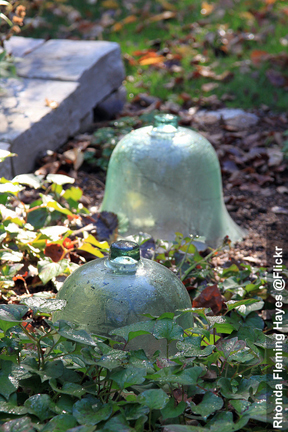The glass garden cloche: one of gardening’s forgotten inventions
Almost 400 years ago, a brilliant invention took the gardening world by storm. In 1623, the glass garden cloche was invented, no doubt, by some frustrated gardener-glassmaker in Italy.
Almost 400 years ago, a brilliant invention took the gardening world by storm. In 1623, the glass garden cloche was invented, no doubt, by some frustrated gardener-glassmaker in Italy.
A cloche is a bell-shaped glass cover that works like a mini-greenhouse in the garden. It offered frost protection to small plants and relief to newly planted seedlings trying to develop adequate root systems. Plants could be started earlier because of the protection. The clear or lightly colored glass aided the plants in cool weather.
The French readily adopted the cloche, followed by English and Dutch gardeners. Thomas Jefferson employed the use of cloches in the vast gardens at Monticello. These originally were the tools of the wealthy because glass was expensive. The cloche later evolved to have a glass knob added to the top of the bell. This made handling and lifting the cloches easier.
But the inventor of the glass knob upgrade had not foreseen what sunlight passing through that ball of glass could do. The sun’s rays were magnified and burned leaves and stems. Gardeners recognized the damage and used a hatchet or other sharp tool to shear the knob off.
That’s why today, it is almost impossible to find a real, antique glass cloche with the knob attached. Only those that went unused retained their “heads.”
Gardeners of modest means used old Mason jars or other saved glass jars for their cloches. Glass cloches are still manufactured today but are used to cover cheese plates or precious objects indoors.
The lowly, wax-paper hot cap used in spring gardens is today’s cloche without the expense or frustration of the originals. These are affordable and available to gardeners with a variety of incomes.



 Print
Print Email
Email
